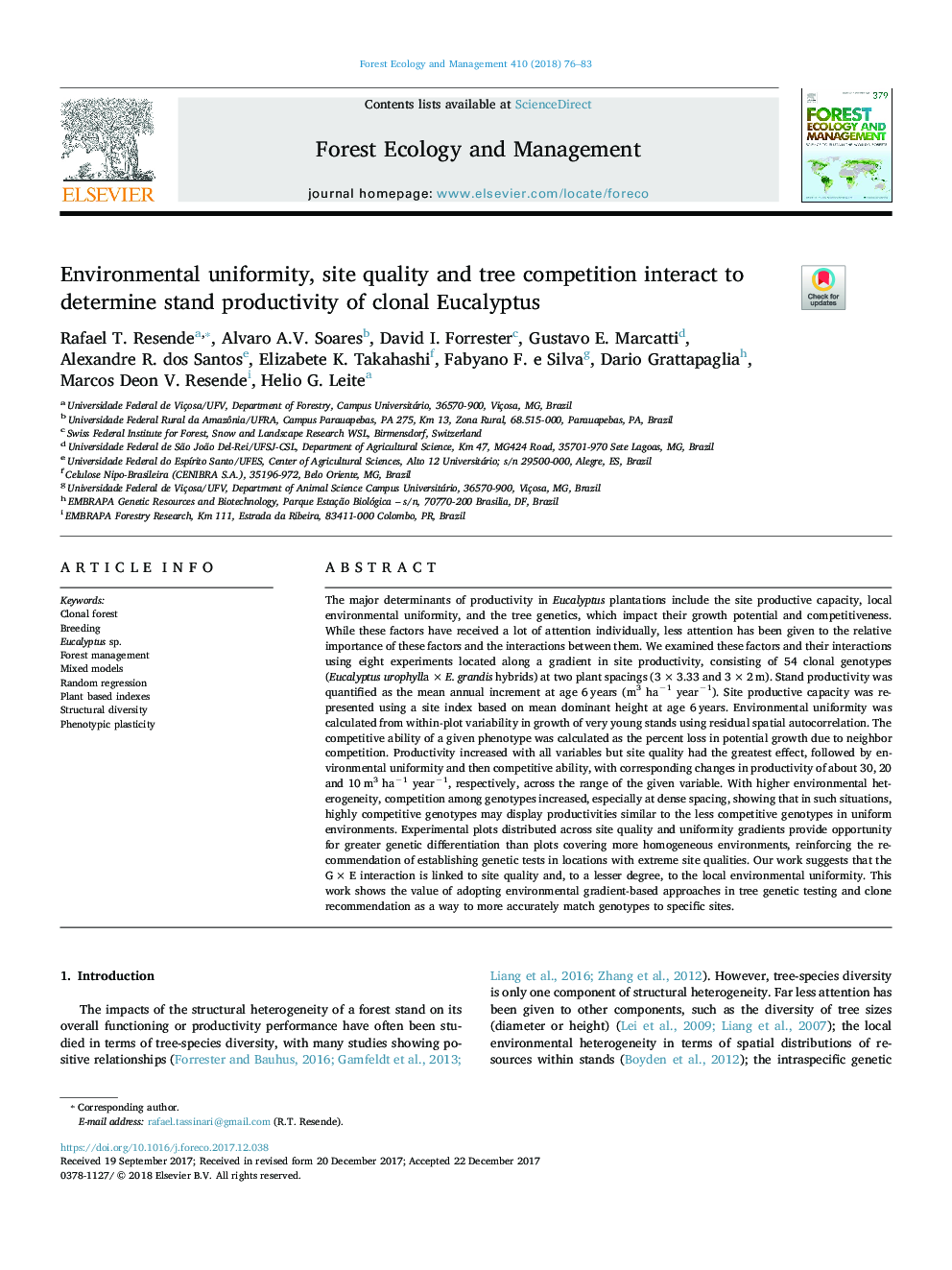| Article ID | Journal | Published Year | Pages | File Type |
|---|---|---|---|---|
| 6541852 | Forest Ecology and Management | 2018 | 8 Pages |
Abstract
The major determinants of productivity in Eucalyptus plantations include the site productive capacity, local environmental uniformity, and the tree genetics, which impact their growth potential and competitiveness. While these factors have received a lot of attention individually, less attention has been given to the relative importance of these factors and the interactions between them. We examined these factors and their interactions using eight experiments located along a gradient in site productivity, consisting of 54 clonal genotypes (Eucalyptus urophyllaâ¯Ãâ¯E. grandis hybrids) at two plant spacings (3â¯Ãâ¯3.33 and 3â¯Ãâ¯2â¯m). Stand productivity was quantified as the mean annual increment at age 6â¯years (m3 haâ1 yearâ1). Site productive capacity was represented using a site index based on mean dominant height at age 6â¯years. Environmental uniformity was calculated from within-plot variability in growth of very young stands using residual spatial autocorrelation. The competitive ability of a given phenotype was calculated as the percent loss in potential growth due to neighbor competition. Productivity increased with all variables but site quality had the greatest effect, followed by environmental uniformity and then competitive ability, with corresponding changes in productivity of about 30, 20 and 10â¯m3 haâ1 yearâ1, respectively, across the range of the given variable. With higher environmental heterogeneity, competition among genotypes increased, especially at dense spacing, showing that in such situations, highly competitive genotypes may display productivities similar to the less competitive genotypes in uniform environments. Experimental plots distributed across site quality and uniformity gradients provide opportunity for greater genetic differentiation than plots covering more homogeneous environments, reinforcing the recommendation of establishing genetic tests in locations with extreme site qualities. Our work suggests that the Gâ¯Ãâ¯E interaction is linked to site quality and, to a lesser degree, to the local environmental uniformity. This work shows the value of adopting environmental gradient-based approaches in tree genetic testing and clone recommendation as a way to more accurately match genotypes to specific sites.
Keywords
Related Topics
Life Sciences
Agricultural and Biological Sciences
Ecology, Evolution, Behavior and Systematics
Authors
Rafael T. Resende, Alvaro A.V. Soares, David I. Forrester, Gustavo E. Marcatti, Alexandre R. dos Santos, Elizabete K. Takahashi, Fabyano F. e Silva, Dario Grattapaglia, Marcos Deon V. Resende, Helio G. Leite,
